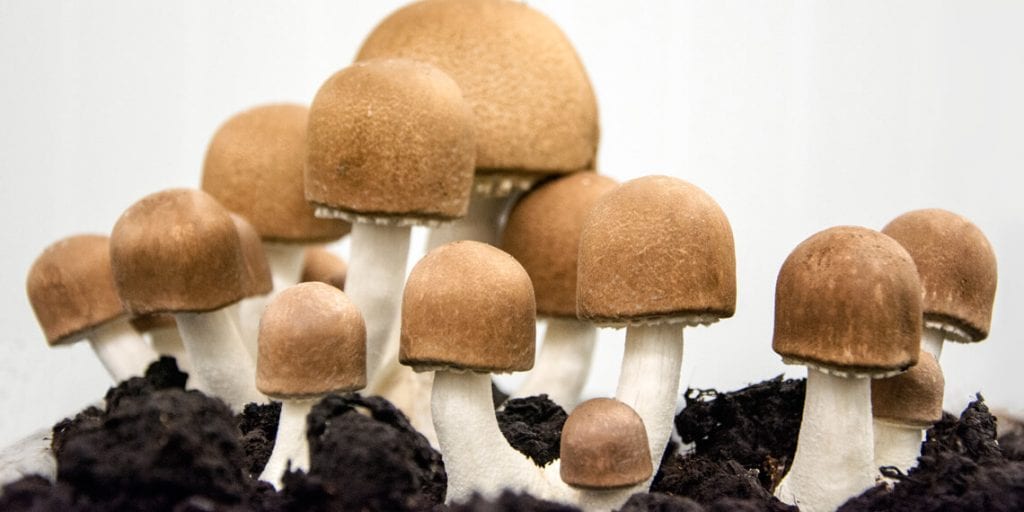General information about mushrooms
Hardly anyone knows it, but mushrooms are in fact neither plants nor animals. They represent their own unique group among the so-called “eukaryotes”, living organisms that have a typical cell core. Contrary to plants, which mushrooms were classified as for a long time, they do not have any chlorophyll nor photosynthesis. The mushroom metabolism is based more on chemosynthesis. They transform organic substances including wood into chemical compounds through enzymes, leading to the formation of new earth materials.
Mushrooms’ Meaning
In nature, mushrooms assume important functions. They detoxify the soil as algae do in aquatic systems. Moreover, they e.g. make soil-based minerals and nutrients utilisable for plants. They decompose dead organisms so that these are re-fed into the natural cycle as nutrients.
Mushrooms are some of the very few organisms that are able to decompose wood. Therefore, they contain substances that we do not find in any other food.
Mushrooms have always been very important for mankind. Apart from being used as food, their sanative effects have been appreciated for thousands of years in Asia and North America. They were used for the same purposes in Ancient Egypt and the Roman Empire. In Central Europe, the healing properties of specific mushrooms were known until the late Middle Ages. However, nearly all knowledge about edible and medicinal mushrooms was subsequently lost.
The significance of mushrooms becomes quickly obvious if we think about the result of nutrient and vital substance deficiencies in humans: fatigue, headaches, lack of concentration or even diseases and disorders.
At the MykoTroph Institute we are predominantly focused on basidiomycetes (higher mushrooms, pillar fungi), whose bioactive substances are of nutritional significance. These mushrooms provide us with valuable protein components – some of them even contain all eight amino acids that are essential for humans. The composition of these ingredients is advantageous enough to ensure a high level of bio-availability (i.e. the body can utilise the substances and benefit from their properties).
Physical structure
Physically, mushrooms consist of three components: the visible fruiting body, which grows above ground, a web hidden in the soil (mycelium) and the fungal filaments (hyphea).
Fruiting body
Usually, the fruiting body growing over ground consists of cap and stipe. The cap’s bottom is covered with fine gills or tubes. They contain the mushroom’s reproductive organs, the spores, which can only be seen under the microscope.
Fungal spores
Fungal spores can be compared to plant seeds. Once mature, air movements release them from the gills or tubes. On suitable, warm and damp soil they will naturally germinate to form a new fungus colony.
Mycelium
The mycelium is located underneath the fruiting body, in the soil’s top layer. It stores and supplies the mushroom with all the nutrients required for the fruiting body’s later growth. In other words, the fruiting body grows from the mycelium.
Hyphea
Hyphea are networks that are invisible to the naked eye. They traverse the entire breeding ground. Thanks to their high enzyme content, they can incorporate and also transport nutrients.
Ingredients
Mushrooms are one of the very few organisms that are able to break down wood. Those mushroom species that grow on wood thus contain unique and valuable ingredients that can’t be found in any other food. This fact alone is reason enough to consume mushrooms regularly.
The mushroom produces enzymes for the hyphae to penetrate the wood or substrate and to subsequently break it down. These enzymes play an important role in our body’s detoxification.
Mushrooms are real vitamin bombs and a valuable source of numerous essential nutrients. Apart from vitamins B, D and E, they contain a large number of vital biological substances and minerals, as well as protein and carbohydrates. What makes mushrooms so unique is furthermore the well-balanced composition of the nutrients and vital substances they contain.
Mushrooms are composed of about 90 percent water, two to six percent carbohydrates and only minimum amounts of fat. Their protein content amounts to 1.5 to 4.5 percent per each 100 grams and – depending on the respective species – can make up to 40 percent crude protein in dried form. This fungal protein contains all eight essential amino acids that the human organism is unable to produce itself, and thus have to be ingested from elsewhere.
Another positive aspect of mushrooms is their richness in dietary fibres, flavouring agents, aromatic substances and B vitamins. Furthermore, mushrooms are low in calories (20 to 40 kcal per 100 grams). Noteworthy is also the ergosterol they contain – a pre-stage vitamin D.
Cultivation & processing
The difference between fungal spores and seeds is that spores don’t have a germ casings but only germ buds, whereas seeds have both. Therefore, fungal spores need to be provided with a germ casing to grow.
In mushroom cultivation, this is achieved by the following procedure: cereal grains are boiled to kill the cereal germ buds. What remains is flour and germ casings. The fungal spores subsequently grow on the cereal germ casings while the mycelium grows around and into them. Once the cereal germ casings have been completely penetrated by the mycelium, the amount of about a tablespoon is separated from the rest for further cultivation purposes and placed onto sterilised substrate. The mycelium can then metabolise the substrate and thus develop ingredients that are essential for the mushroom’s further growth.
After about four to five months, all substrate has been used up, and the mycelium has gained enough energy and ingredients for the mushroom to form its fruiting body with its vegetative (stipe) and generative (cap) parts.
It is an interesting fact that the mycelium has different ingredients than the fruiting body. This is of particular importance for Reishi in terms of its high triterpene content. The majority of them are found in the fungal spores, i.e. in the fruiting body. In other words: Reishi’s fruiting bodies are rich in spores. Consequently, they are also rich in triterpene, which explains their anti-inflammatory effects.
Another important factor is the time that passes in between picking and processing. It is essential to process mushrooms as fresh as possible as they lose their precious active ingredients extremely quickly. Fast and gentle processing thus plays a very significant role for the quality of powdered medicinal mushrooms. Unfortunately, frequently fresh mushrooms that are not sold on the market are processed to mushroom powder. It is obvious that they have lost their valuable ingredients and these mushroom powders are thus not recommended for consumption.
CHOOSE THE RIGHT PROVIDER
There are many suppliers of mushroom powders. You will find trustworthy manufacturers in Germany with controlled organic cultivation. Click here to find out what is important when buying.





